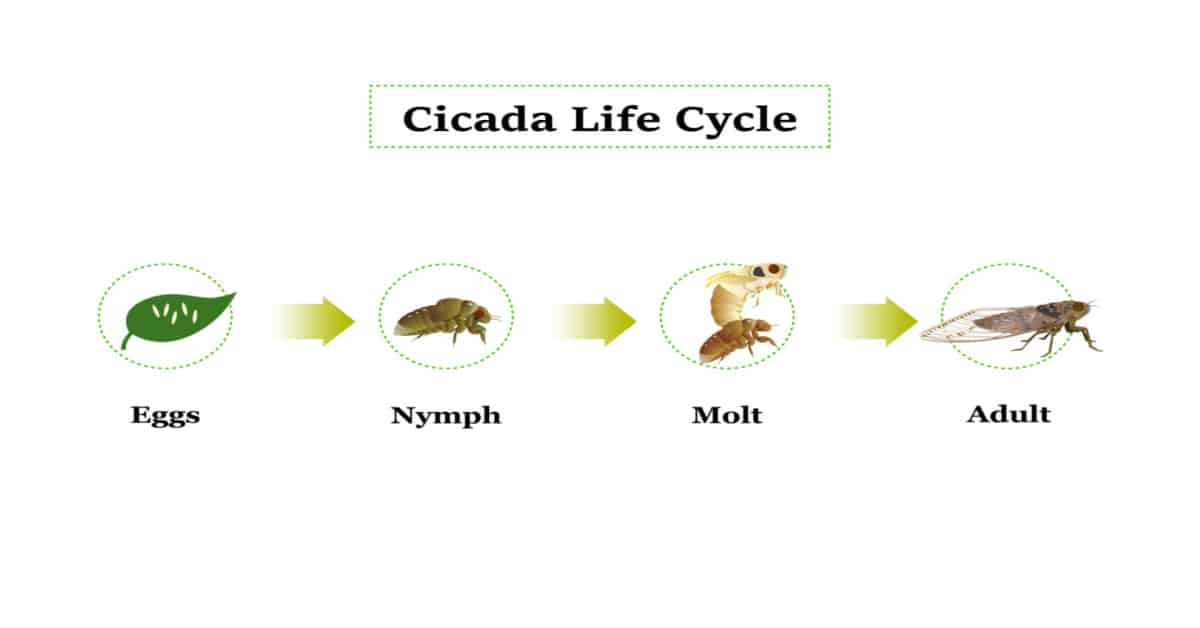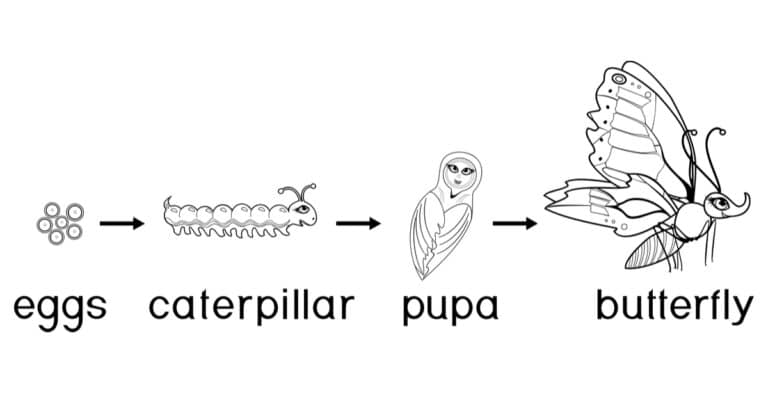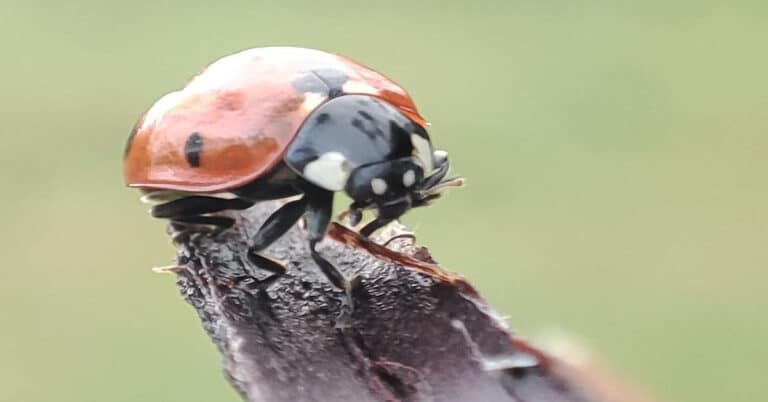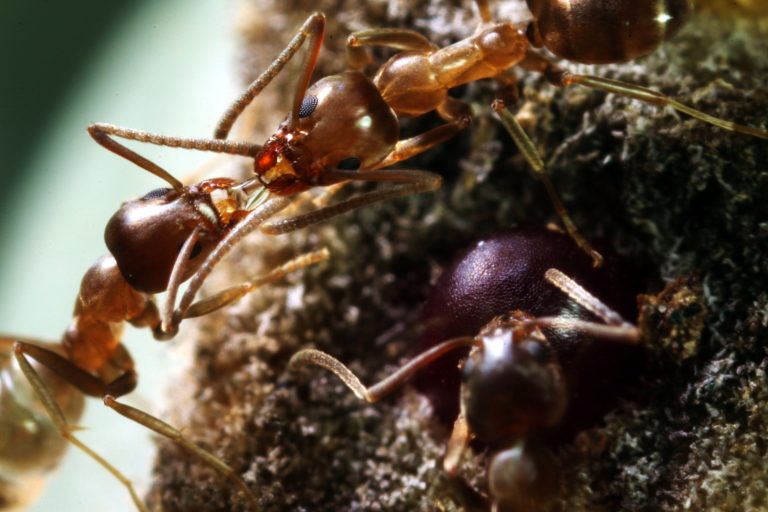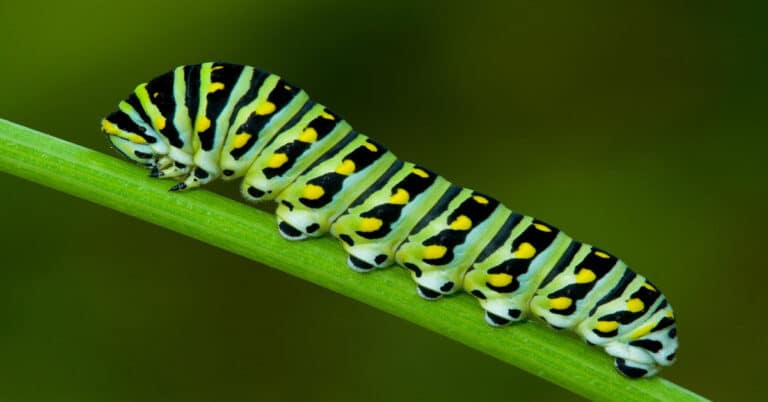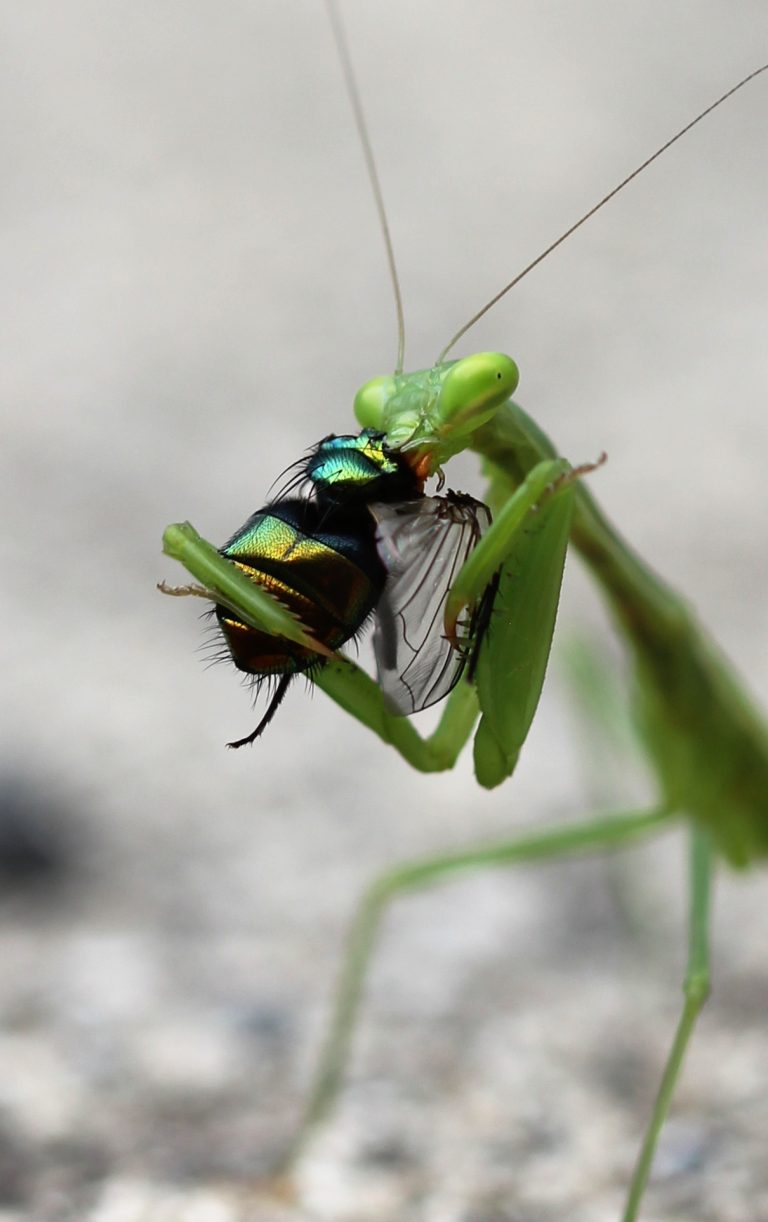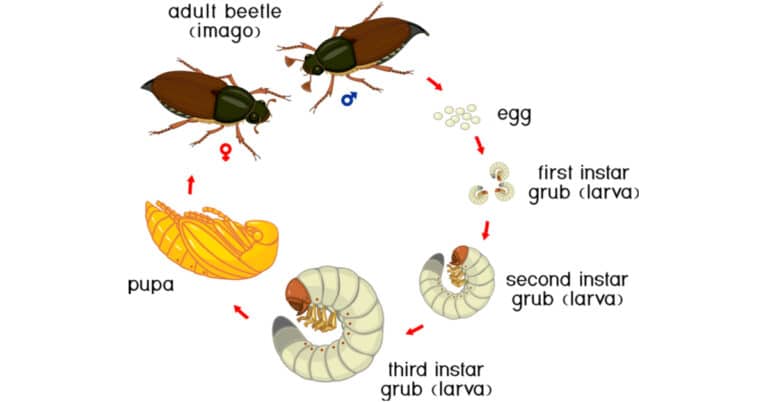Cicada Life Cycle – Peculiar & Fascinating
Since ancient times, people have been fascinated by the incredible insects – cicadas. Due to their peculiar life cycles, they have been revered as symbols of rebirth by many civilizations.
Cicada themes were even introduced into imperial court attire in the 17th century. They were formerly regarded as high-status creatures.
In this article, we will discuss the cicada life cycle and what steps they take from birth to death. So, let’s explore those spectacular creatures.
What Are Cicadas?
Cicadas are extraordinary insects that belong to the superfamily Cicadoidea. More than 3,000 species of those creatures can be found in nature. Those species are divided into two major categories, periodical cicadas, and annual cicadas.
So, how are those two separate groups different? Well, the annual cicadas typically appear every year. However, despite their name, they may come out every two years. Unlike the periodical cicadas, the annual ones do not have the broods synchronized. Additionally, they do not swarm.
As for the periodical cicadas, they spend the vast majority of their life underground and only come out once their life cycle moves to the next step. Cicadas are well known for having a tendency to completely vanish for extended periods of time before reappearing in full force on a predictable schedule. They typically appear every 13 to 17 years, and the cicada life cycle is affected by it.
Annual cicadas actually have a lifespan of two to five years, while certain species may live much longer. That is why the life cycles of different species can overlap. Periodic cicadas can appear in various regions every year.
What Do Cicadas Look Like?
Before moving on to the discussion of the cicada life cycle, let’s first explore what they look like visually. Cicadas are large-sized insects. Periodical cicadas can be smaller in size in comparison to annual ones. The annual cicadas can reach a length of 2 inches (5 cm). On the other hand, periodical cicadas vary between 0.9 to 1.3 inches. (2.3 – 3.3cm)
The one specific piece, the Malaysian Emperor Cicada, comes with a wingspan of 8 inches (20 cm) long. Females tend to be bigger than males.
Similarly to the other insect species, the cicadas have six legs. The wings are somewhat see-through and have veins of an orange color. The thorax is black. As for the abdomen, it can vary and have stripes of either black, orange, or both colors simultaneously. Cicadas have distinguishing red eyes.
Habitat Of Cicadas
While annual cicadas are widespread and can be found all around the world. Yet, the periodicals are only found in central and eastern parts of North America. One species of those insects, Tettigarcitidae, is native to Australia.
Those insects like to stay in deciduous forests. They love it because of the oaks, willows, maples, and other hardwoods found there.
Cicada Life Cycle
The cicada life cycle is made up of three major stages. They are first in the eggs, then hatch and emerge as nymphs. After the nymphs grow, they reach adulthood.
Egg Stage
The eggs are mostly laid on the branches and twigs. The female finds the young tree branch, which is thin compared to others. Once she has finished mating, eggs are fertilized and ready to be laid, and the mother finds the perfect spot. The spot has to be tender and newly sprouted.
After finding the young and fresh branch, the female cicada uses the structure located on the abdomen to cut into it. The structure is sharp, like a knife. After splitting the branch open, the eggs are laid and start to grow and develop. The mother lays up to 400 eggs. Yet, the eggs are not placed in one location. Typically, it is spread among many different sites.
Nymph Stage
The egg stage of the cicada life cycle lasts around 6-10 weeks. After that, they hatch, and the newly emerged nymphs fall from the trees on the ground and dig under the soil. There, they feed off the liquids that are received from the roots. The majority of the cicada life cycle is spent underground in burrows.
The nymph cicadas are small, musky, and white creatures. They have very low weight and because of this, when they fall, they do not get any harm. They have legs designed to dig out the dirt and help them locate the roots and stay near them. They feed off of the root xylem. This is somewhat similar to the sap that comes out of tree trunks.
The nymph stage of the cicada life cycle has 5 steps. Step one is when they molt the skeleton. Typically, it happens after one year of hatching. In each stage, they molt, and they grow in size. Typically, those creatures need 2 to 5 years to grow during the nymph stage. The length is dependent on the food availability, temperature, and general environment around them.
Adult Stage
By the end of the 5 molts, they start to crawl out of the soil. The cicadas go to the closest plants and shed their exoskeletons. After the final shedding, they come out as adults. And that’s the last stage of the cicada life cycle. Before actually leaving the soil, they wait some more time for the exoskeleton to harden. So, they are not vulnerable to the outer environment and predators.
After they are ready, they come out and start looking for their mates. Then they molt the shells and come out on the surface as adults. Finally, they are ready to start the cicada life cycle again. Adult cicadas only live for up to six weeks after emerging.
The short adulthood phase of the cicada life cycle ends soon. Once the adults die, the bodies fall on the forest floor. The bodies are broken down and turned into “fertilizer” for the plants and new nymphs.
Reproduction Rate
The process of changing varies and can be different depending on the soil temperature, outside temperature, and the year. Typically, those insects will wait for the right conditions to appear for breeding.
The perfect soil temperature for cicadas is once the ground warms up to 65 Fahrenheit (18 degrees Celsius). However, as already mentioned above, they wait until a specific year to start the reproduction cycle again. The cicada life cycle is strange, still questioned, and not explored. However, some scientists think that this is their way of avoiding predators.
Swarming Behavior
The strange behavior of periodical cicadas is that, similarly to locusts, they can swarm. They create a crowd of up to 1.5 million individuals on only one acre. However, unlike locusts, they are not destructive. This is because of feeding habits.
The cicadas do not like to eat the vegetation and plants themselves. Rather, they enjoy drinking the sap from roots, branches, and twigs. Because of that, they can feed on the young trees and damage them. Those little creatures do not like old trees and plants and prefer to consume fresh and young ones. However, it all ends soon, way before they cause serious damage.
Those little insects have distinguishing clicking and buzzing noises. The male cicadas vibrate their abdomen membranes and produce very strong sounds. This sound can be different and change according to the species.
They have specific sounds to attract others and find their partner and different noises when expressing their fear of predators or attacks. Once they come out as adults, we often hear hundreds of thousands of them at once. Their sound can reach up to 120 decibels.
However, we are not the only ones who get disturbed by their noise. To protect themselves from loud sounds, the male cicadas typically close the tympanum, which functions like the ears. By closing the tympana, they avoid keeping them damaged by loud sounds.
Threats & Predators of Cicadas
Adult cicadas do not have long life. However, in most cases, they can not die their natural deaths. The threats include wasps and birds. Interesting fact? In some parts of the world, even humans track down and eat them, which is considered a delicacy.
Cicadas avoid predators with their very good camouflage. Their style of camouflage is known as Batesian mimicry. They have vivid colors, which make predators think that they are harmful. If they feel threatened while “singing,” they will immediately lower their voice or get quiet.
Cicadas themselves are harmless and do not pose a threat to humans. They do not carry diseases, but their bite can be pretty painful.
Bottom Line – Cicada Life Cycle
If you hear the loud noise of insects outside one summer morning, most likely, it will be caused by cicadas. They sound like lawnmowers and are pretty loud. Those interesting creatures have been mysterious for a long time and will probably remain so.
Above, we discussed the cicada life cycle and its stages. Once more, it is clear that every part of their existence is interesting and can be fascinating to explore.

Nato is a content writer and researcher with a background in psychology who’s eager to explore the wonders of nature. As a travel enthusiast and animal lover, she hopes to inspire others to discover and cherish the beauty and importance of the natural world.

